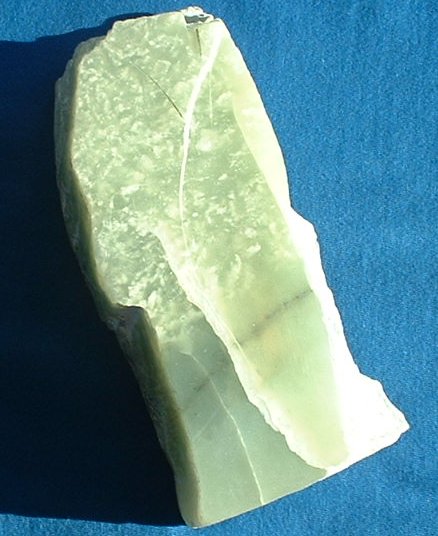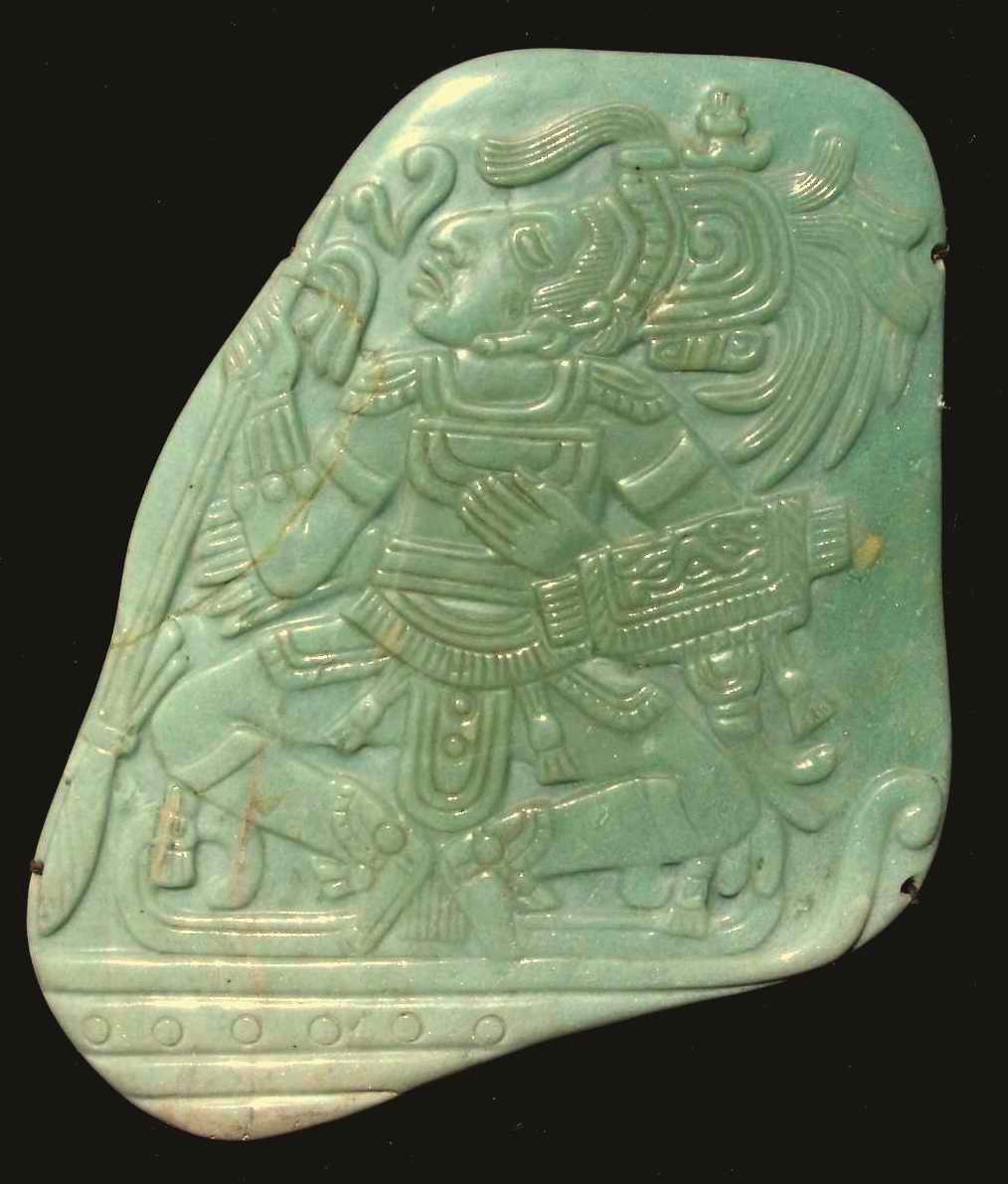Jade is a mineral used to make jewelry and decorations. It is typically green, although it can also be yellow or white. Jade can be referred to as two different silicate materials:
Nephrite – a calcium and magnesium silicate mineral belonging to the amphibole group of minerals
Jadeite – a silicate of sodium and aluminum in the pyroxene group of minerals.
Jade is well known for its decorative usage in East Asian, South Asian, and Southeast Asian art. Latin American nations like Guatemala and Mexico commonly use it. Jade’s scarcity and worth among pre-Columbian Mesoamerican societies, including the Olmecs, the Maya, and other ancient civilizations of the Valley of Mexico, had an impact on its employment in symbolic and ideological rituals throughout Mesoamerica.
Brief History of Jade
Since the Stone Age, China has been mining and processing jade. Simple decorations in bead, button, and tube forms are among the jade items found in prehistoric locations. Weapons and tools were also made out of it. Later, jade gained particular significance and was adored. The Imperial families’ furniture, decorations, rituals, jewels, and sculptures all featured exquisite designs.
The wealthiest and most powerful people in society would be buried in jade outfits. The thread used to connect the pieces of jade would be made of gold, silver, copper, silk, or other materials depending on the rank of the person buried. It was extremely expensive and took years to build.
Sources of Gemstone Jade
The main sources of modern gem jade are Burma (Myanmar) and Guatemala.
Jade can also be found in:
- California
- Wyoming
- Eastern Siberia
Popular usage of Jade
Jade is a very colorful and durable material that can be easily worked into multiple shapes and polished to a much shinier than other gemstones. Jade is so popular including its use as:
- Pendants
- Necklaces
- Bracelets
- Rings
- Earrings
- Small sculptures
- Religious artwork
- Ornaments
Jade jewelry is usually made with a solid gemstone mixed with other precious metals, silver, gold, and diamonds.
Interesting facts of Jade
The term jade is referred to two tough compacts, usually green gemstones that take a high polish.
Since the beginning of time, both minerals have been carved into jewelry, decorations, miniature sculptures, and practical products.
Jadeite is the more valuable of the two jade stones, with nephrite being the other.
Nephrite is a silicate of calcium and magnesium, while jadeite is a silicate of sodium and aluminum.
On the Mohs scale of mineral hardness, jadeite ranges from 6.0 to 7.0, whereas nephrite is a little softer, falling between 6.0 and 6.5.
Both types of jadestone can be white or colorless, but impurities like iron, chromium, or manganese can also cause hues like red, green, violet, and gray to appear.
The most valuable variation of jadeite is an emerald-green shade, whereas light green is the most prevalent shade.
Due to its durability, jade has a long history dating back many thousand years when it was originally utilized to construct tools and weapons.
In ancient China, jade (nephrite) was considered to be the most valuable stone.
Jade is known as “yu” in Chinese, which means “heavenly” or “imperial,” hence in Chinese culture, it is considered as the imperial gem.
Axe heads, knives, and other weapons were made from jade during the Stone Age in many various cultures.
General Cost of Jade
Jade can rank among the costliest stones in the market today in its finer attributes. This is consistent with how ancient cultures regarded jade. It is reported that one emperor exchanged fifteen towns for a piece of jade.
These materials that naturally produce waste are cut extremely seldom since fine material is so hard to come by nowadays. For example, fine bead drops, or bangles can command astounding prices and are never plentiful in the marketplace.
In comparison, modern nephrite is far less valuable. The most expensive nephrite cabochon seldom costs more than a few hundred dollars, in contrast to the exquisite jadeite cabochon, which may cost up to several thousand dollars. Nephrite is not rare, and this is reflected in the cost. Nephrite sculptures from antiquity are valuable for reasons other than their intrinsic material worth.
The quality of the stone has a significant impact on jade’s pricing. It may occasionally go up to $3 million per carat and starts at just $5 per carat. Each gram costs between $25 and $5,000. The most typical price per kg on Jade Auctions is $25,000 to $5,000,000 for rough.
Different Kinds of Jade
Although green Jade is frequently the healing stone color, we are most aware of, the genuine meaning of Jade relates to a stone that comes in a variety of colors, each of which has its charm. What you are looking for in a healing crystal will determine which shade of jade is ideal for you, but all will bring the wearer luck, courage, and plenty of joy.
Blue Jade
The beautiful blue jade is all about reflection and peace. It invites you to sit quietly in your soul and search for dreams.
White Jade
White Jade is recognized for helping to minimize the mind of distractions and keeping things in perspective. White Jade is a wonderful tool for those who struggle with decision-making.
Red Jade
By utilizing the courageous energy of Red Jade, say “yes” to a dazzling and brilliant explosion of chi, stir up your spirit, and get ready to fire down those worries that have long been holding you back.
Black Jade
Black Jade is all about embracing protection, keeping grounded, and making sure that you are not squeezing yourself in with your thinking patterns, just like many of the dark midnight-hued stones.
Yellow Jade
The positive power of Yellow Jade practically shines with good intentions for individuals who want a blast of luck and a bright mood.
Lavender Jade
Lavender Jade connects with our higher selves and aids in our healing from past traumas so that we may breathe deeply and soar to new heights. It is gentle, tranquil, and always in touch with a feeling of spirituality.
Imperial Jade
The majestic moods of the appropriately called Imperial Jade show intense green hues. This stone offers protection and promotes profound harmony, making it one of the most expensive varieties of jade.
Orange Jade
The live wire that is the Orange Jade radiates a blazing warmth and an energizing flow. This stone is a magnificent pick-me-up and radiates life, love, and everything good.
Purple Jade
Purple Jade is a fantastic stone for clearing the cobwebs from the chakras and the soul if you feel like you need a good aura cleaning.
Brown Jade
Brown Jade is all about burying your roots, finding your comfort inside, and avoiding letting life disturb you to your core. It is earthy, grounded, and filled with all the energy of Mother Nature herself.
Zodiac Birthstone
Jade loves to spread happiness and is filled with pleasant energy. Because of this, it may be employed in accordance with a variety of astrological signs rather than being restricted to a single one. All these signs admire the calming touch, self-assured demeanor, and capacity to center and develop the heart, including Taurus, Gemini, Libra, and Aries.
Taureans are incredibly talented, yet for some reason, they frequently succumb to self-doubt. Especially with Jade on their side. Jade can help Taurus signs who are sick of doubting their judgment have more confidence in themselves.
Jade is a highly useful amulet for Geminis to help them align with other individuals and situations. Geminis are lighthearted, fun-loving animals, yet deep down, they might be unsure of themselves and people-pleasers. Jade will intervene to provide you assurance and to help you prepare your heart for riches.
Jade as Jewelry
One of the finest ways for someone to always stay connected to the fortunate and light energy of this exquisite stone is by wearing jade jewelry. When Jade is near your skin, there is no obstruction preventing the healing energies from entering your body and starting to function. One of the most traditional methods to tap into this charm’s strong forces is through jade energy bracelets, which are also quite attractive due to their lush color palette.
Other varieties of Greenstones that align with the heart chakra are other stones that complement Jade well. Jade benefits from the calming aura moods and consistent qualities that agate brings to the table. If you feel you need a little more aid in this area, Rose Quartz is another stone that deals with compassion and heart chakra healing, thus these two stones are a match made in crystal heaven.
Conclusion
As one of the oldest healing crystals and amulets celebrated for attracting luck, Jade is a compassionate and nurturing stone that instantly calms and aids in letting go of any lingering notions. Jade has a gentler and more meditative approach to healing, unlike certain gems that might make you feel like you need to go in headfirst. It is a stone that does not ask for anything in return but instead provides you with all the love and bravery you need to raise your vibration, connect with your dreams, and open yourself up to all the beautiful things that want to come your way.



